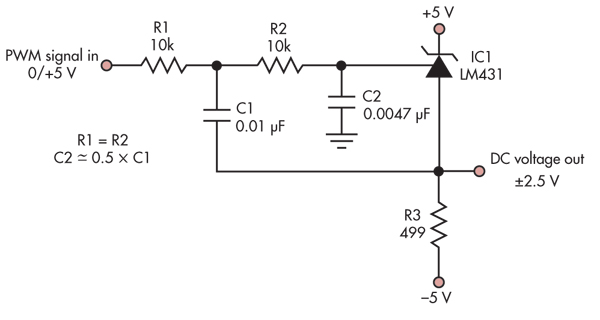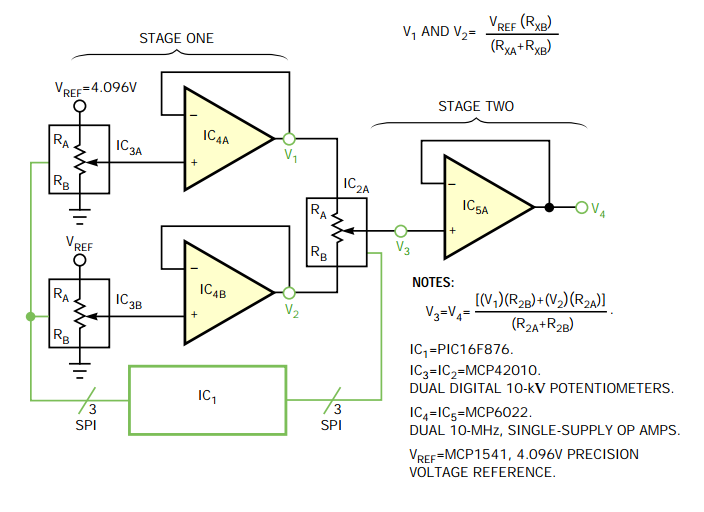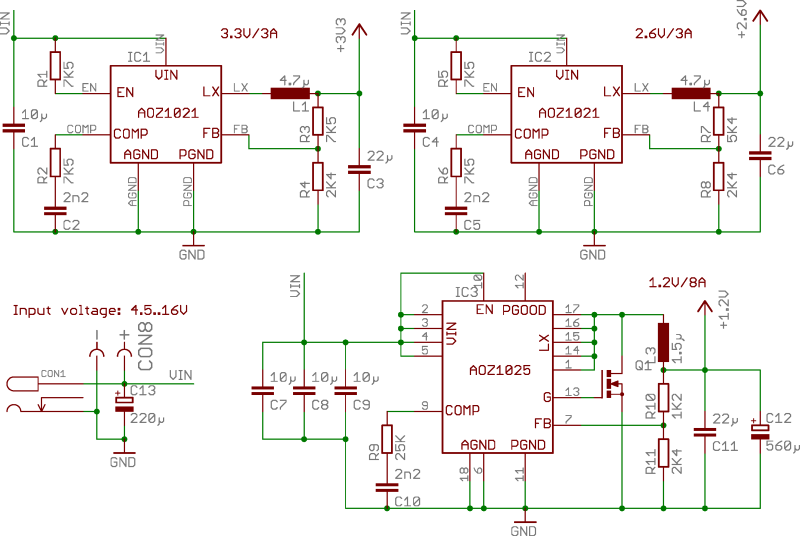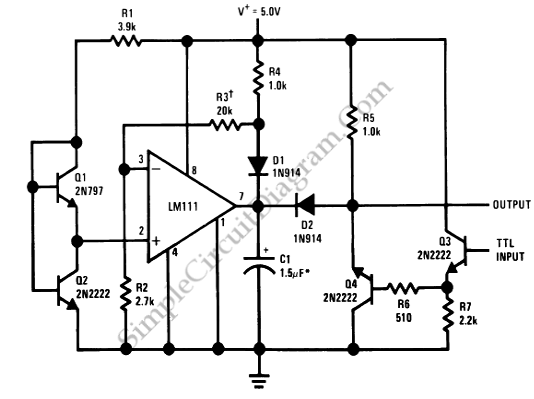
Digitally adjustable precision reference driven via PWM

This simple circuit converts a 5V PWM signal into a variable precision reference voltage with a range of -2.5V to +2.5V. Many designs, such as a digitally controlled power supply or a programmable dummy load, require a Digital to Analog Converter (DAC) to supply a stable reference voltage. This circuit is more cost-effective and requires fewer pins.
The described circuit operates by utilizing a Pulse Width Modulation (PWM) signal as its input. The PWM signal, which varies between 0V and 5V, is processed to produce an output voltage that can be adjusted within the specified range of -2.5V to +2.5V. This is particularly useful in applications where precise voltage control is necessary, such as in programmable power supplies or testing equipment.
To achieve the voltage conversion, the circuit typically employs a low-pass filter, which smooths the PWM signal into a continuous analog voltage. The filter can be designed using passive components like resistors and capacitors, or active components such as operational amplifiers, depending on the desired performance characteristics, including response time and output impedance.
In addition to the low-pass filter, the circuit may include an operational amplifier configured in an inverting or non-inverting configuration to scale and offset the output voltage appropriately. The operational amplifier can be powered by a dual supply to accommodate the negative voltage range, ensuring that the output can swing from -2.5V to +2.5V as required.
Furthermore, feedback mechanisms can be integrated into the design to enhance stability and accuracy. This can involve using precision resistors for voltage division or incorporating temperature compensation techniques to maintain performance across varying environmental conditions.
Overall, this circuit is an efficient solution for applications needing adjustable reference voltages without the complexity and cost associated with traditional DACs, making it suitable for a wide range of electronic projects and systems.This simple circuit that converts a 5V PWM signal into a variable precision reference voltage with a rang of -2.5V to +2.5V. Many designs, like a digitally controlled power supply, programmable dummy load, etc, require a Digital to Analog Converter to supply a stable reference votlage. This circuit is cheaper and requires less pins from a. 🔗 External reference
The described circuit operates by utilizing a Pulse Width Modulation (PWM) signal as its input. The PWM signal, which varies between 0V and 5V, is processed to produce an output voltage that can be adjusted within the specified range of -2.5V to +2.5V. This is particularly useful in applications where precise voltage control is necessary, such as in programmable power supplies or testing equipment.
To achieve the voltage conversion, the circuit typically employs a low-pass filter, which smooths the PWM signal into a continuous analog voltage. The filter can be designed using passive components like resistors and capacitors, or active components such as operational amplifiers, depending on the desired performance characteristics, including response time and output impedance.
In addition to the low-pass filter, the circuit may include an operational amplifier configured in an inverting or non-inverting configuration to scale and offset the output voltage appropriately. The operational amplifier can be powered by a dual supply to accommodate the negative voltage range, ensuring that the output can swing from -2.5V to +2.5V as required.
Furthermore, feedback mechanisms can be integrated into the design to enhance stability and accuracy. This can involve using precision resistors for voltage division or incorporating temperature compensation techniques to maintain performance across varying environmental conditions.
Overall, this circuit is an efficient solution for applications needing adjustable reference voltages without the complexity and cost associated with traditional DACs, making it suitable for a wide range of electronic projects and systems.This simple circuit that converts a 5V PWM signal into a variable precision reference voltage with a rang of -2.5V to +2.5V. Many designs, like a digitally controlled power supply, programmable dummy load, etc, require a Digital to Analog Converter to supply a stable reference votlage. This circuit is cheaper and requires less pins from a. 🔗 External reference





